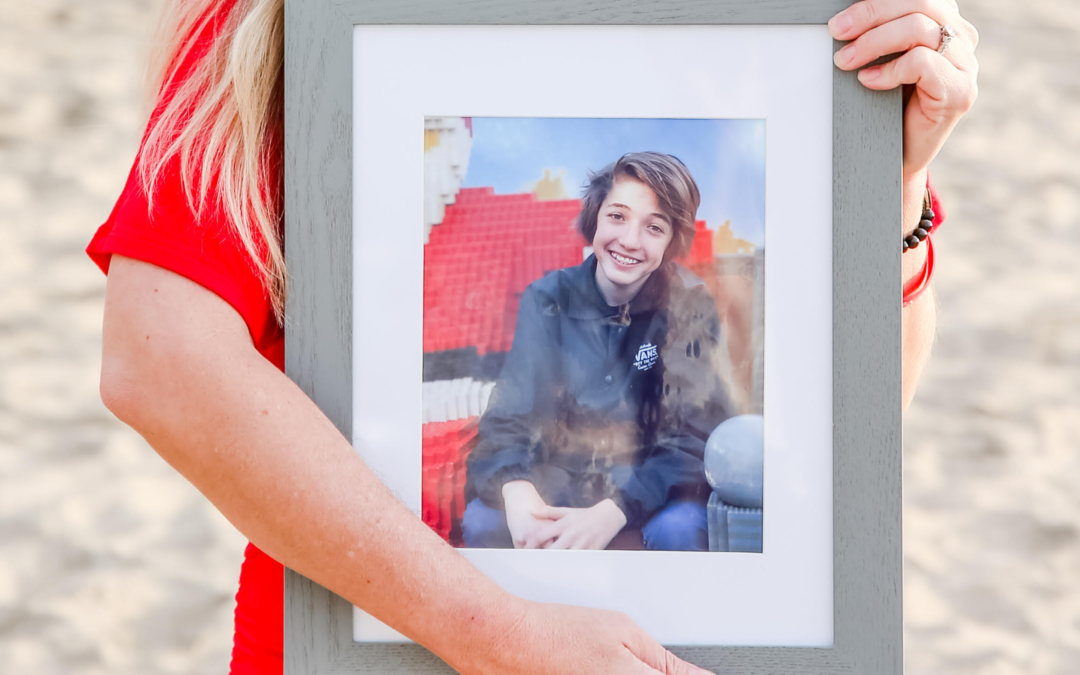By Amy Neville
In the last several years, fentanyl has been infiltrating the illicit drug market. For most of us who don’t use drugs recreationally, this seems like a benign fact. For parents with adolescents, the danger may still seem like a very distant mirage to ignore, but it is a topic that all parents must discuss with their children.
For the better part of a century, we witnessed a drug war that took its toll on the most vulnerable people. Drug abuse occasionally ruined lives or very occasionally took lives. The stigma against drugs ignores the truth that a majority of Americans have tried drugs and a small but significant proportion of people regularly use and may become addicted. Our society isolates regular users, embraces experimentation, and at times, glorifies social use.
With that in mind, many of us have been complacent in our view of illicit drugs. That complacency is also what killed my son, Alexander.
As forty-something parents, we thought we knew everything about the current drug landscape. Cannabis is stronger, pain killers are still around, cocaine, heroin, mushrooms, etc. We knew that and we spoke with Alex about the dangers and worked hard to be there for him every day.
Alex was fourteen years old and was just starting summer vacation after that rocky COVID semester in 2020. He was supposed to get up one morning and go with me to an appointment. When he didn’t come down from his room, I went to get him and instead found my baby motionless on the floor of his room. My husband ran upstairs and began CPR until EMTs arrived—to no avail.
That was the first time we heard about illicit fentanyl.
After the sheriff left with little more than condolences, my sister and a narcotics task force showed up to take inventory. We finally learned about the new drug landscape. They used an analogy called the “chocolate chip cookie” to explain what happened.
Illicit fentanyl is mixed into nearly every illegal substance. Most cocaine and heroin, and some street marijuana is laced with fentanyl. All pills outside of a pharmacy are guaranteed to have illicit fentanyl instead of whatever they’re pressed to look like. They are all counterfeit: oxycodone, percocet, xanax, mdma, ketamine, and others.
The reason this happens is because fentanyl is cheap and easy to produce. It is considered 50-100 times stronger than opioids of the same weight. Therefore, while adults can take 30-50 milligram pills of oxycodone if prescribed, fentanyl requires 1000 times less to achieve the same feeling: 30-50 micrograms. At 2 milligrams, fentanyl is fatal. 2 milligrams looks like a few grains of salt in your hand.
Illicit fentanyl can be produced by anyone just about anywhere. For drug cartels and legitimate pharmaceutical companies, the allure of fentanyl is inescapable. Traditional opioids have natural origins in the poppy plants of exotic regions of the world. Production involves major risks and costs. Fentanyl, made in a lab, has very little risk, very little cost.
That’s where the chocolate cookie comes in. Again it only takes a minuscule amount of fentanyl to achieve the same effects, so it’s important to mix thoroughly. FDA-approved medical use manufacturers have precision equipment to accomplish this task. Black market entrepreneurs use wooden spoons like they’re making cookies. And just like when you mix a bag of chocolate chips into the batter, you cannot depend upon each cookie getting an even amount of chips. That’s how deadly pills are created.
Imagine the 1 in 2 adolescents who experiment with drugs. How do they know which drugs are safe? They don’t and they can’t. No one can. Worse, drug use is ostracized and stigmatized, so are these adolescents going to ask a trusted adult? They will ask their guides, the dealers. Some dealers will lie straight to your face because they have an opportunity to gain another customer with an extremely addictive product (the addition of fentanyl increases the addictive quality of the product).
Of the 105,000 known US drug deaths in 2021, the majority were attributed to illicit fentanyl. In the US, drug death is the greatest threat to the 18–49 demographic: greater than heart disease, cancer, automobiles, and guns. Adolescents are currently the fastest growing demographic to be impacted by drug overdose deaths. Orange County has seen a rise in drug deaths from 2016 to 2021 of 1600%—making fentanyl the single biggest killer of youth 17 years old and under. Every eight minutes, a person dies from drugs in the US.
The best solution is to educate and help move drug use out of its stigma so we can help. Many local high schools are offering education for parents and students, and ongoing conversations at home can save lives. Any use of illicit drugs can now lead to death, even the first time a young person experiments. If you are concerned about someone’s substance use or you would like help with how to start a conversation please contact the Wellness & Prevention Center – info@wpc-oc.org wpc-oc.org


Thank you for your courage in the face of such terrible tragedy. When will the schools also educate all middle & high school students about the dangers of fentanyl? I have heard there have been fentanyl deaths at Dana Hills, vaping stuff sold on campus at Marco. None of this seems real to teens.